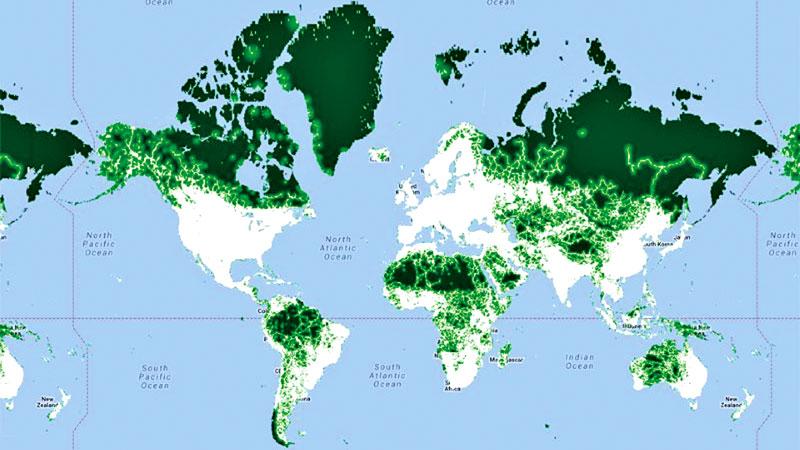
Scientists are calling for the urgent protection of ecologically valuable roadless areas, writes Tim Radford, as a new global map shows that roads lead to loss of biodiversity and damage to ecosystems by fragmenting habitat and providing access to exploiters.
European, Brazilian and US scientists have delivered a new map of humanity’s mark on the world.
Roads now fragment the terrestrial landscape and divide it into 600,000 significant patches - and only 7% of the roadless areas are larger than 100 square kilometres.
More than half of the patches are less than 1 sq km and four-fifths are less than 5 sq km. The implication is that humans are getting everywhere, and bringing with them noise, pollution, damage to wildlife and biological invaders.
About the only regions in which roads are few are the tundra, the deserts and the rock- and ice-covered highlands. The temperate and mixed forests of the world are the most divided by roads.
Pierre Ibisch, of Eberswalde University for Sustainable Development in Germany, and colleagues report in Science, that they used citizen science and internet data sets, and reviewed 282 studies, to make the maps.
They allowed a 1km buffer zone along each road, because the construction of any road creates disturbance, including the loss of timber. And, they conclude that a third of the world’s roads are now in regions with low biodiversity, low ecological function and low ecosystem resilience.
Construction of roads
They see those areas still beyond the reach of cars, trucks and tractors as vulnerable: “Global protection of ecologically valuable roadless areas is inadequate”, they write. “International recognition and protection of roadless areas is urgently needed to halt their continued loss.”
Such studies are fresh ways of illustrating what scientists call the ‘Great Acceleration’: one human lifetime ago, the world was home to only 2.5bn people, and very few of them had cars.
UN scientists predict a population of at least 9bn people this century, and possibly a much higher number before 2100. The cities are expanding, and new built-up areas will cover more than 1 million sq km between now and 2040.
By 2050, the world will build an estimated 25 million kms of new road lanes, most of them in the developing world. In a related finding, another team of researchers has just calculated that the human ‘technosphere’ - the sum of all things humans have built or excavated - has reached a mass of 30 trillion metric tons.
Andrew Balmford, a professor of conservation science at the University of Cambridge, UK, and colleagues argue in a separate study in the Public Library of Science journal Biology, that it should be possible to devise a highway strategy that makes the best use of existing farmland, serves the greatest number of people, and yet, conserves the natural ecosystems that deliver services of profound value to all humanity.
Among these are, water management, carbon storage, crop pollination, and plants and animals that could be the source of new foods and medicines.
We must safeguard the most important areas!
The researchers tested their argument in the Greater Mekong region of south-east Asia, a landscape that includes, Vietnam, Laos, Cambodia and some of Myanmar. It is home to 320 million people, 20,000 plant species, 2,000 terrestrial vertebrate species and 850 varieties of freshwater fish, and has lost a third of its tropical forest in the past four decades. “The Mekong region is home to some of the world’s most valuable tropical forests. It’s also a region in which a lot of roads are going to be built, and blanket opposition by the conservation community is unlikely to stop this”, says co-author Xu Jianchu, professor of ethnoecology at the Kunming Institute of Botany, in China, and regional coordinator for the World Agroforestry Centre.
“Studies like ours, help pinpoint the projects we should oppose most loudly, while transparently showing the reasons why, and providing alternatives where environmental costs are lower and development benefits greater. Conservationists need to be active voices in infrastructure development.”
According to environmental group Roadfree, which campaigns to prevent the fragmentation of forests by roads worldwide, “The international community is engaged in a race to halt biodiversity loss and reduce carbon emissions caused by deforestation. Funding for environmental protection is currently scarce; yet, keeping wild areas free of roads is a remarkably cost-efficient way of protecting biodiversity and keeping the planet cool, and is an antidote to slow political decision making.
“These maps are a crucial tool to help decision-makers rethink road building, and with us, promote more sustainable options and better infrastructure planning.”
- Ecologist
